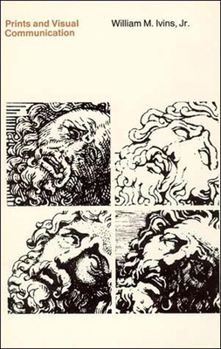Prints and Visual Communication
Select Format
Select Condition 
Book Overview
The sophistication of the photographic process has had two dramatic results--freeing the artist from the confines of journalistic reproductions and freeing the scientist from the unavoidable imprecision of the artist's prints. So released, both have prospered and produced their impressive nineteenth- and twentieth-century outputs. It is this premise that William M. Ivins, Jr., elaborates in Prints and Visual Communication , a history of printmaking from the crudest wood block, through engraving and lithography, to Talbot's discovery of the negative-positive photographic process and its far reaching consequences.
Format:Paperback
Language:English
ISBN:0262590026
ISBN13:9780262590020
Release Date:July 1969
Publisher:MIT Press
Length:288 Pages
Weight:1.05 lbs.
Dimensions:0.7" x 5.9" x 8.9"
Age Range:18 years and up
Grade Range:Postsecondary and higher
Customer Reviews
1 rating
The language of image
Published by Thriftbooks.com User , 21 years ago
This is one of those wonderful books. It's written by a contrary, crotchety old man, full of opinions you won't hear anywhere else, and incredibly well-informed. The author was retired from the Metropolitan Museum of Art, where he had been curator of prints. I listen when he talks on the topic of prints, and I think I hear why he waited until retirement to write this book. It starts with a diatribe against classical Roman culture as derivative from Greek, and against classical Greece as `predatory'. He argues that much of the Western classical period was powered by a steady stream of slave labor. As a result, the captors shunned practical arts as demeaning to free men (slave owners). Printed replication of text was well within their technology and would have suited their needs as a reading intelligentsia. The problem was that the presence of slave labor had weakened the slave-owners so much that they couldn't be bothered to carve a printing block. As a result, they created a weakened intellectual heritage, founded on what sounded good instead of what replicated the features of nature. Ivins ties the history of technological innovation to the history of the printed images that educate the innovators. Pictorial information, he argues, enabled the scientific and engineering efflorescence that started in the Renaissance. Ivins supports that premise with a brilliant tour of the history of pictures on paper. He treats the hand-copied and re-copied manuscripts as the prehistory of true image capture. He traces that history forward through the many technologies of image-making, including woodcut, wood engraving, and intaglio print, on up through photos distributed by machine printing. He offers a number of historical anecdotes, some from traditional sources and some from his personal knowledge of the early 20th century. Along the way, he thoroughly debunks the mystique of printmaking. It has, overwhelmingly, been a practical art. Much too much has been made of the artificially limited edition, of the false mystique around specific processes and practices. Back in the 1950s, when this was written, that may have been an especially important message. It's still true, to some extent, but I think it undercuts the modern printers who choose printmaking because of its unique expressive capabilities. Still, it's a clear, well-directed discussion, and illustrated with a rich assortment of demonstrative prints. This book is a treat for anyone interested in the history of prints and pictorial communication; it's a confection for everyone who likes their sacred cows cooked well done. //wiredweird





